- Home
- Scott Turow
The Last Trial Page 3
The Last Trial Read online
Page 3
The judge, who has not bothered to remove her robe, as she ordinarily does in chambers, has chosen to stand at the end of the table, while the lawyers sit, reemphasizing her authority.
“I decided it’s a good moment to have a word with the group. We all know that my long relationships with the lawyers in this case are somewhat unusual. We are all friends here. And we will be friends when this case is over. But I will not allow any of you to impose on my friendship while this case is on trial.” With those words, Sonny levels her dark eyes at Stern. “We had extended discussions last week about how to deal with the delicate matter of the many civil lawsuits that are pending against PT and Dr. Pafko.”
Kiril’s indictment provided a vulture’s meal to the plaintiffs’ bar. Two days after the first Journal article, the Neucriss law firm here in Kindle County had worked its customary magic and had filed multimillion-dollar suits for wrongful death in behalf of five families from across the US, quickly followed by dozens more civil cases brought by the Neucrisses and other personal injury lawyers from coast to coast. Besides those suits, several plaintiffs’ class actions have been filed in behalf of PT’s shareholders, alleging securities law violations and damages of hundreds of millions of dollars.
The distinction between civil cases, brought by private citizens to seek financial compensation for their injuries, and criminal cases, initiated by the government with the usual goal of sending the defendant to prison, often confuses laypeople. That could be expected to include jurors, who might not understand that in order to convict someone for a crime, the evidence must leave them far more certain—no reasonable doubts about guilt—than in a civil case. For that reason, Sonny was initially inclined to forbid any mention of the civil suits, but during last week’s pretrial rulings, she accepted the Sterns’ arguments that fairness requires allowing the jury to know that some witnesses stand to profit by their testimony. Even so, the judge said that she would decide what questions were proper, one witness at a time.
“Giving the benefit of the doubt,” Sonny says now as she stands over the table directing a hard look at Stern, “I suppose I can see, Sandy, how you misinterpreted my ruling and thought it was all right to mention the civil cases briefly. But I was clear as day that there was to be no mention of the money any witness was seeking or had been paid. In fact, Sandy,” Sonny says, “I have a distinct memory of you saying that the jury might take actual settlements as an admission of guilt on Dr. Pafko’s part. Am I wrong about that?”
Stern hesitates briefly, just to give appropriate recognition to the judge’s ire.
“You surely are not, Your Honor, but I found in the moment that I had changed my mind.” In the courtroom, facing the actual jurors and the prospect of the heartsore testimony of persons whose loved one died after taking g-Livia, it was suddenly clear to Stern that Kiril was better off if the jury realized that they did not have to convict Pafko to ensure the grieving families received some compensation. He can see, however, from what swims across the judge’s face that this explanation startles her, and she straightens up.
“Yes, Sandy, but I did not change mine.” With the words, she sets her knuckles on the table, robe billowing, bringing the level of her dark eyes closer to Stern’s. “If you, or any other lawyer, disobey my rulings again, then, old friend or not, I will deal with you appropriately.”
The omen is absorbed in silence.
The chief judge’s long friendship with each of the lawyers in the case is an awkward fact. Stern and she met three decades ago, when Sonny was an Assistant US Attorney investigating Stern’s client, his sister’s husband. It was a difficult time for both of them. Stern was only weeks past Clara’s suicide and Sonny’s marriage was collapsing while she was in the late stage of pregnancy. With both lawyers at sea emotionally, there was a dizzy night when they seemed smitten with each other. The infatuation dissolved in the daylight like a dream, entirely unrealized. Now Stern’s body is in decay, and while Sonny’s robust beauty remains, she has become completely gray and rounder. Yet in Stern’s view, the importance of those kinds of attachments in a life never fully fades.
Marta has a more current bond with the judge. She shared a nanny, Everarda, with Sonny for years. They refer to one another as “besties.” Work, by longstanding agreement, is never part of their conversations, which reinforces their intimacy, since they speak routinely of husbands, children, the travails of family, what is closest to their hearts.
Because of both Sterns’ affinities with the judge, in Sonny’s twenty-five years on the bench in state then federal court, neither Sandy nor Marta has ever tried a case before her. It was Moses’s ascension to US Attorney that complicated matters. As the drawing on Sonny’s wall reflects, Appleton and she were prosecutors together, favored trial partners who forged the bonds of battle. Sonny and her husband, Michael, are probably the best friends Moses and his wife, Sharon, have away from River of Zion Baptist Church, where Moses frequently preaches. When their daughter, Deborah, finished law school, she served for two years as Sonny’s law clerk, overlapping for a year with her co-clerk—Dan Feld.
Furthermore, Sonny cannot simply remove herself from Moses’s cases. The US Attorney is the government’s sole official representative in federal district court, meaning that almost 70 percent of Sonny’s trial docket is consumed by criminal and, sometimes, civil matters brought in Moses’s name. His reputation is at stake in every one of those cases, whether or not he is present in court. Recusal would require Sonny to stop doing the bulk of her job. Worse, it would burden her fellow judges, who would inherit those cases, an especially unbecoming development inasmuch as the chief judge must prod the other district judges to stay up to date with their caseloads.
Accordingly, when the case was randomly assigned to Judge Klonsky, she sent a joint e-mail to Moses and Stern and Marta. ‘Talk among yourselves and in your offices. If you think, on balance, you want a different judge, just e-mail Luis,’ her docket clerk, ‘and tell him to put it back on the wheel. No hard feelings, I promise.’ Moses was the first to hit Reply All and say, ‘No objections here.’ Marta was less inclined to agree, but Stern pointed out that Kiril’s interests favored staying put. Sonny is an excellent trial judge who is fairer to the defense than many of the former prosecutors on the bench, and she is also a lighter touch at sentencing.
Now they are at the first crossroads. Facing Sonny’s baleful look, Stern can only speak the truth.
“Your Honor, I was confused,” he says. The words are sincere, but the explanation settles in the room like a bad odor. It is a second before Stern recognizes that what he said might be taken as a reference to his age. The judge jolts slightly, while Stern continues to fumble. “I thought that because Your Honor had ruled in response to our objection, we could proceed otherwise.” This explanation does not really make sense even to him, and in the end he can offer only abject apologies and a promise that there will be no reoccurrence.
The deeply humane look, which has always been essential to the Sonya Klonsky Stern knows, wars in her face with deeper doubts, but she decides to say no more. She tells the lawyers she will see them in five minutes in the courtroom.
4. g-Livia
Across the corridor outside the courtroom doors, in the small Attorney & Witness Room, Stern briefs Kiril and Donatella with studied nonchalance about what transpired in chambers. Then he returns to the defense table, where he finds himself momentarily alone, trying to calm himself by taking in the majesty of the chief judge’s courtroom.
First erected in the early 1900s in beaux arts style, the courthouse was undergoing expansion when the market crashed in 1929. The building’s intricate architectural detail, finished during the Depression by craftsmen employed by the WPA, required substantial upkeep, and thus the courthouse was briefly abandoned about forty years ago in favor of a glass-and-steel tower built across Federal Square. But the mechanical systems there were a disaster. Stern still recalls a winter day when you could see your breath inside, and
old Judge Carrier took the bench in a topcoat and mittens.
The judges returned here. These days the Old Courthouse is a cherished landmark, often portrayed on postcards showing glamour shots of the central staircase of wrought iron and translucent alabaster panels winding beneath the glass-domed roof. Within Sonny’s two-story courtroom, slanting walnut pilasters frame the wide arched windows and naturalistic murals depicting legendary scenes of justice. Overhead, the ceiling coffers are etched in gold, with bizarrely beautiful chandeliers set on the corners, inverted obelisks of greenish copper. For a second, Stern marvels about Beauty, supposedly eternal but often judged so differently across the generations.
Abruptly, the judge returns, and the onlookers and lawyers scurry to their seats. Once the jurors are again in the box, Sonny turns to address them.
“Ladies and Gentlemen, from time to time as the trial proceeds you will hear the lawyers make objections. It may sound like they are being technical, or even trying to hide things from you, but they are doing their job to ensure that this case is decided according to rules for conducting a fair trial. Those rules have been followed for centuries, with good results, and it is my job to decide whether the objections are correct. When, as just happened with Mr. Stern right before our little break, I sustain an objection, then you must do your level best to put what he said out of your minds. It is something I’ve decided doesn’t fit within those time-honored rules.”
At the mention of his name, Marta gives her father a solid kick in the ankle under the table. He is actually pleased that she has recovered her sense of humor, since Marta’s expression while they were in chambers was stark and alarmed. And he accepts the admonition delivered at the point of her shoe: It is imperative for any trial lawyer to stay on a judge’s good side, at least in the presence of the jury. Jurors always love judges, whom they take as their only reliable guide through the strange land of the law.
“Mr. Stern,” the judge says, “please proceed. I believe you are going to speak about twenty minutes more.”
He responds with an obedient nod and struggles to his feet.
“Ladies and Gentlemen,” he says, “in the remainder of my opening remarks, I want to address Mr. Appleton’s most dramatic charge, that Kiril Pafko, MD and PhD, for his own profit, supposedly put a medication on the market with the intention that some patients would needlessly die. The evidence will show that, were it not so grave, this accusation would be laughable.”
With his cane, Stern again limps to a place a few feet in front of the jury rail.
“Now let us concede the obvious. It is true, sadly, that patients who were taking g-Livia died, and that those deaths were often a great blow to their loved ones. We all sympathize with their grief. But you do not take g-Livia like an aspirin. You take g-Livia because you are very sick, because you have serious progressive cancer, and because you know that without it, the odds are you will die relatively soon. Yet the prosecution will not and cannot prove, let alone beyond a reasonable doubt, how long any one of the persons named in the indictment would have survived, if they were not taking g-Livia.”
“Objection,” says Moses. Stern’s neck is far too arthritic to allow him to look back without moving his entire body, but he revolves smoothly to face Moses. This, too, is something he will miss. Age has made him slow and even clumsier. One knee is irreparably diseased, while arthritic pain radiates along the length of his spine. His balance is perilous. Yet by whatever magic, in the courtroom he has always moved with grace.
“That is not what the government is obliged to show,” the US Attorney says. From Moses’s settled tone, Stern is certain that this is an objection Moses is making for tactical reasons. But on the bench, Sonny is shaking her head.
“I heard him describing the evidence, Mr. Appleton. Overruled.”
“Thank you, Judge Klonsky,” says Stern, nodding politely, hoping the jurors conclude that the judge and he are again on good terms. “Yet the most obvious answer to the murder charges is Kiril Pafko’s life. For fifty years he has made immense contributions to curing cancer, perhaps greater contributions than any other human being alive.
“To understand, you must learn just a little bit about Kiril’s research, which is remarkably complex. But feel no fear, please: I do not really understand what Kiril does, so from me you will hear no long confusing lectures.”
In the jury box, they all smile. Stern feels he is already over the first hurdle. Instinctively, juries often dislike the person who speaks for someone accused of a serious crime.
“Cancer, as you know, occurs when cells in an area of our body stop going through the normal cycle of first growing, then eventually dying and being replaced by younger cells. Instead, cancer cells grow uncontrollably. Most often, they form huge masses in our bodies, called tumors.” Stern again touches his chest, over his own lungs, which were afflicted. He is far from the only cancer survivor in the room. One of the jurors, a heavy, dour CPA, revealed during voir dire that she has had two bouts of bladder cancer, and Sonny, as a young woman, lost a breast. Her gratitude for the decades of good health she’s enjoyed since is one more reason Stern regarded her as a particularly lucky draw for Kiril.
“Since cancer research began, doctors and scientists have longed for the so-called magic bullet, the drug that would stop cancer in its tracks. In 1982, Kiril Pafko was one of three scientists who first discovered that a large percentage of all cancers, including three of the four leading killers—that is lung cancer, colon cancer, and pancreatic cancer—can be traced to a genetic change in a single family of proteins present in every cell in our bodies, the so-called RAS protein. This is a picture of the RAS molecule.” Pinky obliges with an image of RAS, a mass of blue and pink and purple circles that looks very much like a bunch of grapes. Stern knows that speaking about RAS, of which his own understanding is limited, may befuddle the jurors briefly, but it will illustrate Kiril Pafko’s genius, which is central to the defense.
“RAS is the on-off switch for cell growth. Kiril’s discovery was that in cancer, RAS somehow forgets its initial coding, allowing that wild cellular growth to occur. This was a discovery of immense importance, because it offered the first genuine opportunity to stop or even cure this disease.
“You do not need to take my word about the significance of what Dr. Pafko found.” Slowly, Stern has made his way behind his client and now places his free hand on Kiril’s shoulder. “Because in 1990, Dr. Kiril Pafko received the greatest honor that can be bestowed on any physician, any physiologist, any medical researcher on earth. Kiril Pafko, this man sitting before you, was called to Sweden and awarded the Nobel Prize in Medicine”—Stern once more adds weight to each of those four words—“a prize that has gone previously to people like the doctors who discovered penicillin, who cured tuberculosis, to Doctors Crick and Watson who first identified DNA. That is the company as a scientist that Kiril Pafko keeps.” Moses actually filed a motion to prevent any mention of Kiril’s Nobel, claiming it is irrelevant, but Sonny ruled that the defendant in a fraud case is always entitled to prove his reputation for honesty and integrity, which is implicit in the prize. Faced with that, Moses, in his opening, mentioned the Nobel in passing, but with Stern’s expansive explanation, it feels as if he has suddenly drawn back a curtain to reveal the sun.
“When Kiril’s discovery was made, the scientific world assumed that we would soon learn how to reverse the lethal process taking place when RAS somehow forgets its job. But RAS, for more than thirty-five years, has proved ‘undruggable,’ meaning despite the ardent efforts of thousands of scientists of unquestioned brilliance—despite that, no pharmaceutical product or process has been discovered to make the RAS molecules in tumors function in the healthy way they should.
“But doggedly, decade after decade, Kiril has studied RAS. In 2010, Kiril and Lep published a discovery almost as important as the first. What goes wrong with RAS in cancer is that it attaches to the cell membrane backwards.” On the monitor, the RAS protein swi
ms in space until the back side is attached to a larger blob, from which it’s separated by a tiny red line.
“And this is where PT enters the story. Kiril, in partnership with Easton University and a venture capital fund, decided nearly twenty years ago to try to put his amazing theoretical discoveries into practice by formulating actual medications. In 2012 and ’13, PT developed something called a monoclonal antibody, a mAb for short, a product that mimics our natural immune system. That mAb, which has a long scientific name, which I will now attempt to pronounce for the one and only one time: Gamalimixizumab”—Stern makes a good show of struggling to get the word out of his mouth—“that mAb, thanks to Olga Fernandez, PT’s marketing director, received the brand name of g-Livia. What g-Livia does is basically surround the RAS protein on the wrong side.” On the screen, a cloud surrounds one end of the bunch of grapes. “With the wrong side disabled, the mutant RAS proteins attach to the cells correctly and send normal signals. Tumors stop growing, and even, sometimes, begin to die.” In the animation, RAS turns, and a brief little twinkle sparks on-screen.
“g-Livia is the magic bullet. Although it was tried first on lung cancer, non–small-cell lung cancer, to be precise—these names,” says Stern and once more wags his head in chagrin over the difficult nomenclature—“Kiril and many, many other scientists believe that g-Livia will not only stop tumor growth in a host of lung cancers but also in colon cancer, in pancreatic cancer, in bladder cancer.” His eyes flinch just slightly toward the female CPA.“Quite literally, as many as forty percent, two out of every five persons on the earth cursed by cancer, could be helped, even cured, by g-Livia.”
Moses once more has come to his feet. “Your Honor, haven’t we gone far beyond what is proper in opening?”

 Testimony
Testimony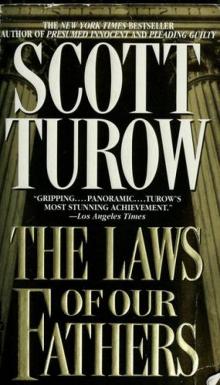 The Laws of Our Fathers
The Laws of Our Fathers Ordinary Heroes
Ordinary Heroes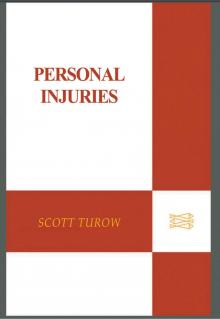 Personal Injuries
Personal Injuries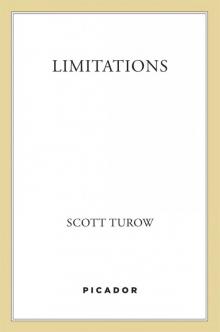 Limitations
Limitations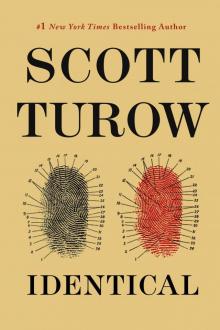 Identical
Identical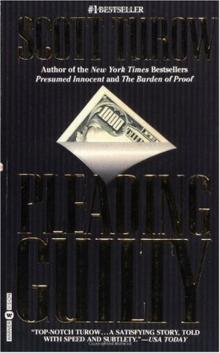 Pleading Guilty
Pleading Guilty Presumed Innocent
Presumed Innocent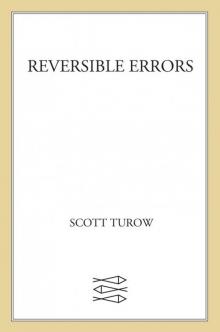 Reversible Errors
Reversible Errors One L: The Turbulent True Story of a First Year at Harvard Law School
One L: The Turbulent True Story of a First Year at Harvard Law School Ultimate Punishment
Ultimate Punishment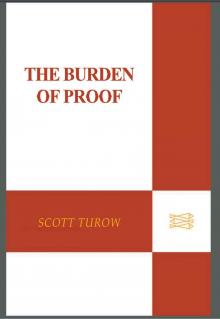 The Burden of Proof
The Burden of Proof Ordinary Heroes (2005)
Ordinary Heroes (2005)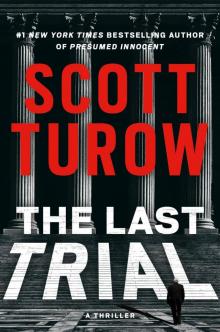 The Last Trial
The Last Trial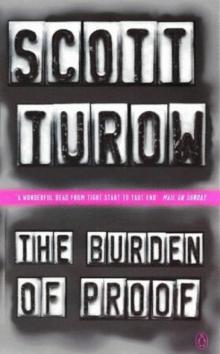 The Burden of Proof kc-2
The Burden of Proof kc-2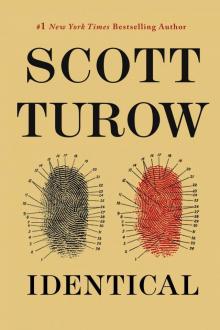 KC09 - Identical
KC09 - Identical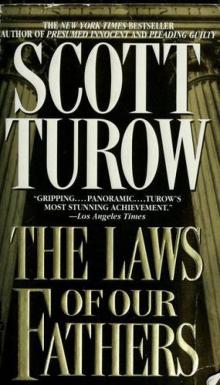 The Laws of our Fathers kc-4
The Laws of our Fathers kc-4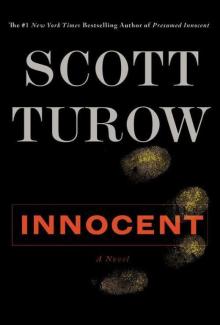 Innocent kc-8
Innocent kc-8 One L
One L Identical kc-9
Identical kc-9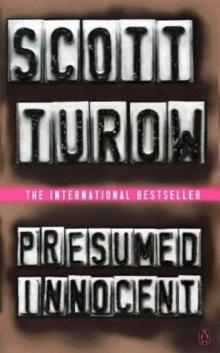 Presumed innocent kc-1
Presumed innocent kc-1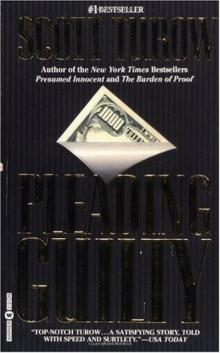 Pleading Guilty kc-3
Pleading Guilty kc-3 One L (1977)
One L (1977)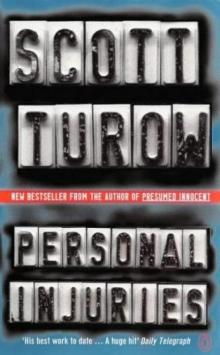 Personal injuries kc-5
Personal injuries kc-5